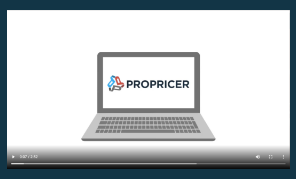Every buyer wants the best price, and the government is no exception. But when you calculate costs and resultant pricing in response to a request for proposal (RFP) or request for quote (RFQ), your offer should be reasonable yet still allow you to make some semblance of profit.
However, most agencies today want you to go above and beyond—or perhaps more accurately, below and beyond—when it comes to your final proposal numbers.
What follows are the three most common government discount pricing scenarios and how you can find the upside in each for your contracting firm:
1. When You're Obligated to Offer 'Most Favored Customer' Discount Pricing
If you’re fortunate enough to be on the shortlist of contractors considered for an award, an agency contract specialist will likely contact you to schedule time to negotiate on pricing. The agency’s goal? To gain terms that are as good as or better than those you grant to your Most Favored Customer or MFC.
Your MFC is the customer whom you give your absolute best price. Usually a commercial client, your MFC is a required disclosure as part of your current contract’s negotiations. 1
An MFC clause is a standard component in both agency and other commercial contract negotiations, designed to make sure you grant your best price to your other customers. Since the award of federal contracts has exploded in recent years, the MFC clause has become an integral component of nearly all proposal negotiations.
MFC fulfillment is also increasingly subject to audit scrutiny; should the DCAA decide to study one of your contracts, the finding can result in litigation for breach of contract, exposing you to a potential False Claims Act prosecution. During this, you can be held liable for lawyer fees on both sides if you lose—not to mention automatic loss of the contract at hand. It’s imperative to always be on the up and up when it comes to the MFC clause. 4
But back to negotiations: Once you discount pricing to accommodate MFC, your agency will request your Final Proposal Revision (FPR), then prepare an ultimate version of your offer for review. This final version includes all negotiated discounts, terms, and conditions. 1
How you can win: With this type of government discount pricing, you can get paid faster. You have the option to propose an even lower price than the MFC requirement, if the government agrees to pay their invoice within a certain number of calendar days in exchange.
Under typical contract terms, you could end up floating employee payroll, sub fees, and the cost of components integral to the contract for more than 30 days. To expedite payment, an extra-discount offer allows you to propose a different calendar-day limit for payment—sometimes as little as 15 to 30 days.
Unfortunately, your agency can’t use discounts in a contract’s initial evaluation process. This means a contracting officer isn’t able to use your discount offer to place you in a competitive range, or contractor shortlist. 2
2. When You Have to Follow the Price Reduction Clause in GSA Schedule Contracts
Just as in non-GSA transactions, best-price offers are a critical component of your GSA Schedule contracts. It’s no secret that agencies often buy from a GSA-Schedule vendor because they can get goods at minimum cost. If you’re a contractor operating within the GSA, you must follow specific pricing rules and requirements, such as reporting your commercial sales practices and contract offers.
Often, you’ll also need to follow an agency’s Price Reduction Clause (PRC) throughout the life of your contract, which is similar to honoring an MFC discount in a non-GSA scenario. Accommodating this clause is one of the most crucial aspects to maintaining compliance with your GSA Schedule. The clause guarantees a fixed relationship between the discount you offer through GSA, and the discounts you offer your “Basis of Award (BOA) customer,” which is the customer you offer the very best pricing.
Your BOA is typically your best commercial customer, to whom you offer your most attractive concessions. They’re often the same as your MFC customer in a non-GSA context. 3
When is a PRC triggered post-award?
If you:
- Revise your commercial price list after winning a contract award, reducing the prices of future commercial projects
- Grant more favorable discounts or terms to a business or agency than those in your commercial price list
- Grant special discounts to a BOA customer that are lower than your pricing relationship with the agency. 5
Exactly how much are the discounts?
In the scenarios that follow, you’ve agreed that the government will always pay 1 - 5% less than your BOA. Your “Discount Relationship” is the difference between the two percentages.
GSA Discount BOA Discount Discount Relationship
Product #1 3% 1% 2%
Product #2 9% 4% 5%
Product #3 2% 1% 1%
When even further discounts apply
At this point, the agency can ask for even lower prices through the PRC. Should the BOA discount relationship shift after contract award (e.g., you further reduce a price or increase a discount), the PRC mandates further price reductions.
If you decide to lower your prices for your BOA, you must maintain that discount on your GSA-Schedule contracts to avoid violating the Price Reduction Clause. The Price Reduction Clause can trigger at any point during the life of your GSA Schedule. However, there are some exceptions to distinguishing between standard and non-standard discounts.
Standard discounts in commercial sales
When developing your standard commercial discounts, focus on the discount you offered during your last closed fiscal year. If the discount falls under one of the categories listed below, they are standard discounts:
- Discounts exclusive to educational institutions, nonprofits, state and local governments, or national/corporate accounts
- Discounts on volume purchases
- Discounts for favorable payment terms
- Reduced shipping terms
- Concessions such as rebates or extended warranties.
How you can win: Non-standard discounts and other exceptions
Chances are, you offer non-standard discounts under certain circumstances. Some examples include:
- Discounts on discontinued products
- Donations of your products/services
- Discounts that mitigate a customer service dispute.
It’s important to distinguish between standard and non-standard discounts because non-standard discounts will not trigger the Price Reductions Clause in a GSA-contract situation, so long as you’ve sufficiently communicated use of the discount to your agency.
In addition to non-standard discounts, there are a few more instances where you can provide discounts and not trigger the Price Reduction Clause:
- A commercial sale that exceeds the maximum order limit for the Special Item Number (SIN)
- Additional discounts are offered to an eligible customer (per OGP 4800.2I) that are not part of the federal government but purchase from your GSA Schedule
- Your participation in the Transactional Data Reporting (TDR) pilot program, which doesn’t require communication of commercial sales practices. 3
Before including your proposal or direct-buy item on a GSA Multiple Award Schedule (MAS), the government requires that you list your items at or below the lowest available price to an identified category of commercial customers.
This scenario is similar to the PRC example in #2. Before you’re awarded an MAS contract, you and your agency will agree upon (1) the customer category the government will use as the BAO and (2) the government’s price or discount relationship relative to the identified customer category.
Pro Tip: Your government agency will attempt to broaden the commercial customer base while you will seek to minimize it. State that certain classes of customers are not comparable to your agency customer.
How you can win: Noncompliance can be very expensive. But compliance won’t cost you anything. The Department of Justice (DoJ) recently announced a $6.5 million settlement with Fastenal. Allegedly, the national hardware store distributor provided better discounts to a non-government customer category than was offered to its GSA MAS customers. Similarly, the DoJ received a $128 million settlement from NetApp, where an employee stated it had knowingly failed to provide the GSA with complete, accurate information about its commercial discount practices. These and other highly publicized cases incentivize the DoJ to aggressively go after other alleged violators in the MAS contract space. So…comply and survive. 4
ProPricer: The Consistent, Compatible Way to Present Pricing and Discounts
ProPricer is on the GSA schedule ourselves (Contract #47QTCA20D008H), so we know how critical GSA and GSA MAS compliance can be to running a successful company. One way to smooth your path when submitting initial-proposal and discounted-proposal submissions is to render your files in the same digital format most government agencies use. In using ProPricer Contractor Edition, you can prepare any type of proposal submission up to five times faster than with Excel, and in a format the government loves.
Maximize the efficiency and accuracy of your proposal pricing submission, evaluation, negotiation, auditing, and revision with ProPricer. Try the Essentials version of ProPricer Contractor Edition completely free of charge for 30 days.
Agency discounting is a reality these days. You can either anticipate it and comply right upfront, or go through lengthy negotiations and uncomfortable noncompliance scenarios. Our advice? Choose the easy way—and discount away.
Sources





